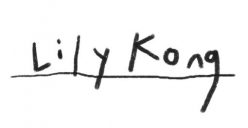Notes – identify qualities/devices in work
What does the picture lack?
What does it leave out?
What is its area of erasure?
Its blind spot?
Its anamorphic blur?
What does the frame or boundary exclude?
What does its angle of representation prevent us from seeing, and prevent it from showing?
What does it need or demand from the beholder to complete its work?
(Mitchell)
Iteration 51 (Page 52)
The 2 scenes are cropped by the window frames. Only the main character/prop is centred and highlighted with a drop shadows. It looks almost awkward as it was very obvious in the image, hitting the gaze of the viewer.
The sense of space is sometimes highlighted with the use of blank space and eliminating the amount of objects shown/drawn on the image. The main characters and props are often centred. The space surrounding the mains are often empty, hinting a sense of space also guiding the viewer to read the mains instead of backgrounds. The rest of the information is erased as it was predominantly considered by the creator (me) as unimportant.
If we read the text as a verbal dialogue, the work portrays solely the view of the main character which it said “I am so lonely.” Feelings, dialogues, information of the other brick walls (surrounded by the main) are erased. They are considered non-essential. In some ways, harm to the picture.
The rest of the pictures seems cropped by the window frames. On one hand, this method gives a sense of zooming effect, as if viewers are looking into a small incident in details through the magnifying lens.
In this image, it requires to read it as if they are watching a moving image/movie with subtitles, in which they treat the caption as subtitles, transcripts, scripts of dialogue. It requires the reader to read the brick wall, a non-human character as a living organism, as if they have emotions, facial expressions and the ability to think and feel.
Thoughts – 03/05/2020
I relate to Exercise in style by Reymond Quenaud, in which he focuses on the form rather than the content. He experimented the link between communication and interpretation in the form of writing.
Our iterative methods seem similar but our focuses are different.
In this brief, I create iterations that communicate the same subject but of a different narrative. The format is different, so as the style, hence the narratives of the work has also changed compared to the first iteration. For example, in the “Love” series, the first iteration is to simply present intimacy between two characters. The narratives of the later iterations changed. In “Love” iteration No.20, the image presents a pancake compiled of many layers of “some love’, as if it can be read as – Love exists only if we collect many layers of incomplete love.
Quenaud proves that narrative changed since interpretation of the creator and documentation in writing are different. In my iterative process, I found something similar – even the subject of the message remains the same, the format changed ,hence the narrative also has changed.
It is not to say that the iterative exercises between Quenaud and I do exactly the same thing, as it was hard to distinguish if style comes first in my work.
Right now I am creating another series of iterations on “Ground”.
(tbc)
Thoughts – 30/04/2020
I watched Xiao Ling’s the dictionary 2019 again. I was touched by the fact that she wanted to reshape some of the existing, structured meanings of words. In a way, this is what I have been trying to do – subliming existing meanings of subjects. I want to reshape interpretations of certain subjects/concepts, like loneliness?
Currently, my take is to use drawings/illustrations like comments. It is a short and snappy opinion.
